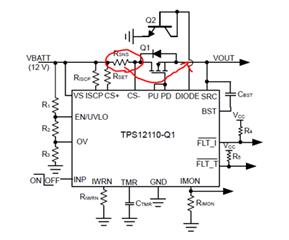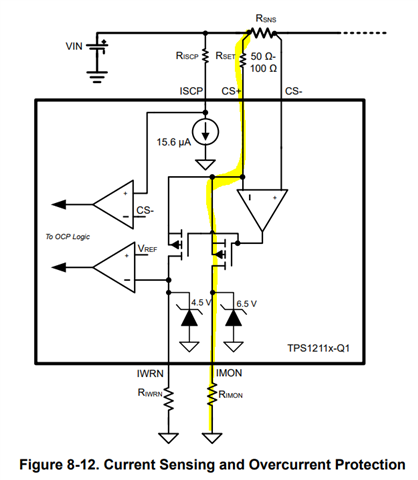Tool/software:
Hello team,
Are we able to put the RSNS resistor at the low side of the main FET Q1 like below?

Regards,
Hirata
This thread has been locked.
If you have a related question, please click the "Ask a related question" button in the top right corner. The newly created question will be automatically linked to this question.
Tool/software:
Hello team,
Are we able to put the RSNS resistor at the low side of the main FET Q1 like below?

Regards,
Hirata
Hi Rakesh-san,
Could you let me know the reason? I need to check but it might be critical.
Regards,
Hirata
Hi Hirata,
The current sense amplifier is not designed to support rail-rail voltages.
Best Regards,
Rakesh
Rakesh
I don't understand what you mean. Please explain the reason clearly.
Regards,
Hirata
Hi Hirata,
Please refer 5.4 Input Common Mode Voltage Range in https://www.ti.com/lit/an/sloa011b/sloa011b.pdf?ts=1719323047788&ref_url=https%253A%252F%252Fwww.google.com%252F
In this context, the current sense amplifier in TPS1211-Q1 does not work when the common-mode voltage is <3V i.e. a scenario where Rsns is placed at Vout. During startup Vout is close to zero, so, current sense amplifier does not able to detect any fault at the output.
Best Regards,
Rakesh
Rakesh
I don't find the description that TPS1211-Q1 current sense amplifier needs VCM > 3V. Where is this described in the datasheet?
or do you mean below?
1. Max V(IMON) voltage is always below the common mode voltage of the CS+.
2. The output current cannot be measured when common mode voltage is not high enough because of "1".
3. When RSNS is at the down stream of the FET, common mode voltage of CS+ is small during start up.
4. Because of "1", "2", and "3" above, There is a risk that output current cannot be measured accurately during startup if RSNS is located at the down stream of the FET.

Regards,
Hirata